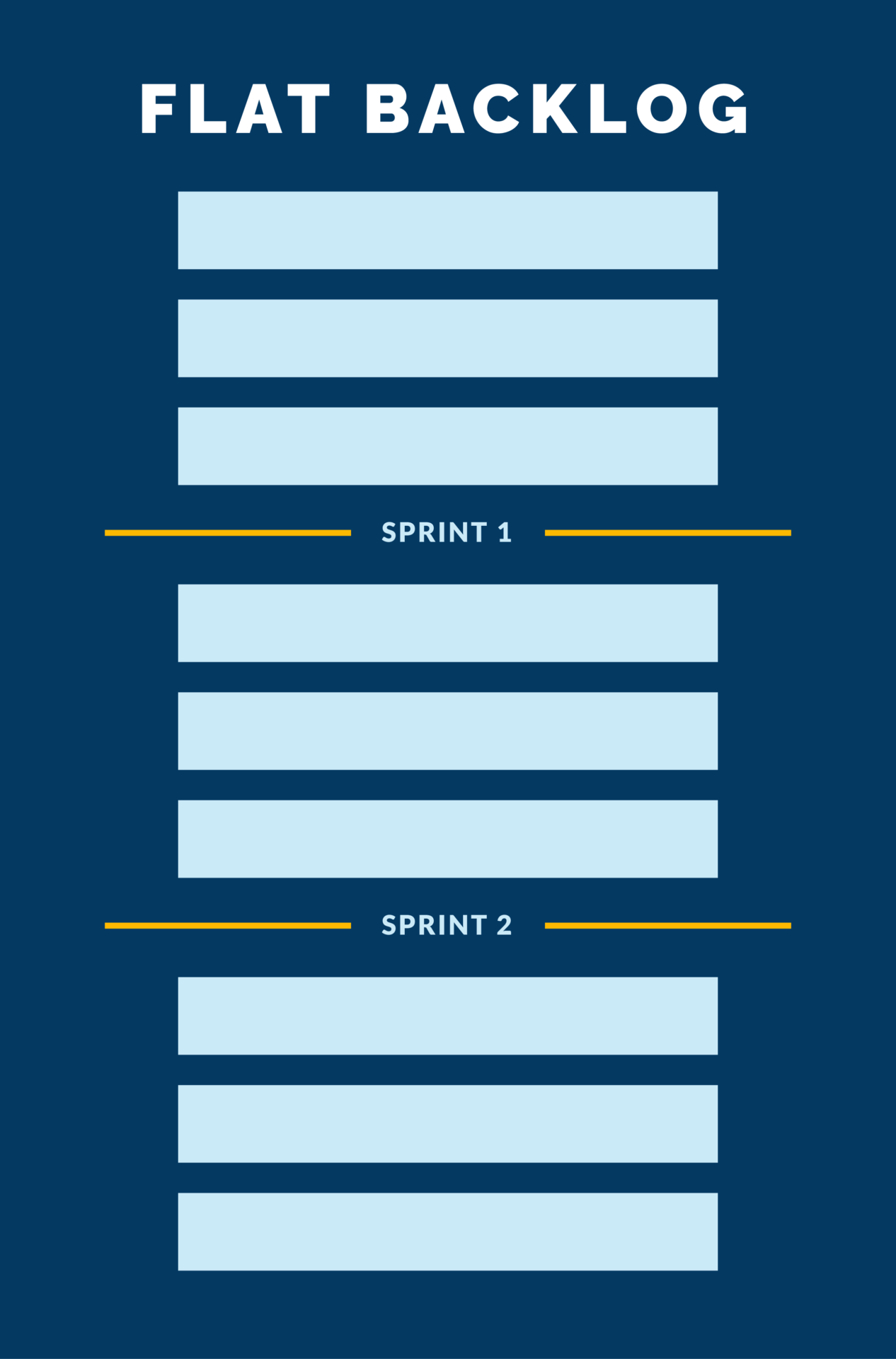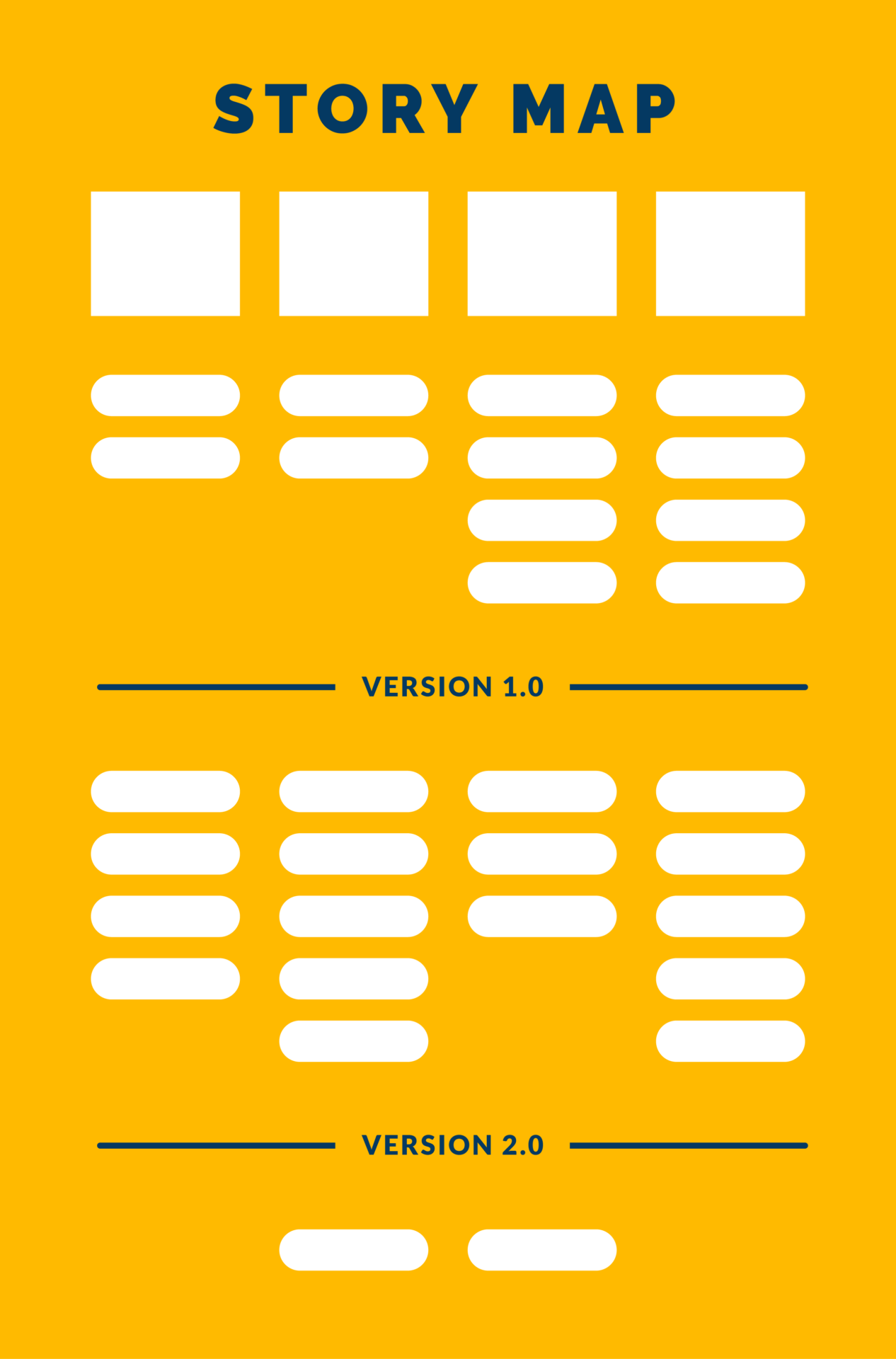In 2005, borrowing heavily from other solutions, Jeff Patton created a two-dimensional visualization technique for backlogs called “story mapping.” It was immediately found to be so effective—especially compared to its predecessor, the flat backlog—that it became a best practice in product development. The concept is simple to learn, but it will benefit developers for the rest of their career.
Story mapping is much easier and more efficient than using a flat backlog to plan product development, and it offers many advantages. This quick overview will show you how story mapping works and how it can improve the product development process.
At ALTEN Technology, we’ve adopted this technique in a holistic, system-level approach to integrated product development (products that have mechanical, electrical, and software aspects such as medical devices). Story mapping isn’t just for software anymore!

Shortcomings in the status quo (flat backlog)
A flat backlog is made up of items such as features, bugs, technical work, and knowledge acquisition. User stories describe the functionalities your team is attempting to achieve from the user’s viewpoint. These user stories may be arranged in the order you intend to build them, but this process is insufficient to explain to others what the system does.
A flat backlog fails to place bits of functionality (i.e. user stories) within the context of the user’s experience. A flat backlog lacks organization, and it is difficult to discern which product features should be addressed first.
A flat backlog is also tedious and time-consuming. Flat backlogs do not organize product features by importance to the user and may result in a lot of time spent on irrelevant or redundant functions.
Story mapping vocabulary and visualization
Story mapping solves these problems by visualizing the entire product functionality set in one overarching storyline. As described by Jeff Patton, a story map begins with a row of cards across the top, which are activities or “big stories.” The row of cards organizes the tasks done by similar types of functionality (or people, depending on your product) in comparable time frames to accomplish a goal. User activities are arranged from left to right on a story map to represent the user’s chronological progression while using the product.
The next row of cards is referred to as the backbone because it provides the overarching narrative of tasks for your story map. Supported by the backbone, the subsequent rows offer details, including subtasks, alternate tasks, and exceptions. Any details relevant to accomplishing a task on the backbone can be added to a sticky note and placed under the task.

Story mapping process and tips
Someone that understands the story mapping process should act as a facilitator. Participants include experts from a variety of disciplines, including marketing, sales, engineering, management, maintenance, and even end users. It is also important that story mapping is a focused brainstorming session, so no phones, laptops, or other distractions. Schedule time for breaks to allow people to check email and conduct other business.
Keep up the process for the duration of the project. For story mapping to be effective, it needs to be used consistently. While this may seem like a daunting prospect, story mapping (or task tracking) software can make the process easier and allow for easy collaboration and sharing of feedback.
Swap it around as necessary. The modular nature of story mapping makes it easy to arrange and rearrange stories to achieve an optimal configuration. We at ALTEN Technology are big fans of sticky note-based story mapping. Go out and buy jumbo notes for the “big stories” and medium-sized notes for the various ideas and tasks. We also recommend writing in marker on the notes so the ideas are easily visible to the story mapping group.
You will also need to secure a dedicated meeting room for at least a day and often longer. One of the walls (ideally a whiteboard) will become the story map.
Rather than brainstorming the entire story map in one go, break the brainstorming into groups based on the big stories or substories. This allows the team to focus and isn’t as intimidating as trying to think about the entire product functionality at once.
Story mapping utilization
You can utilize the user activities to prioritize tasks because story mapping provides a clear picture of what needs to be done and in what order the tasks must be completed. Because story mapping shows the whole picture, it’s easy to identify which tasks must be done first. Place higher-priority and higher-risk tasks toward the top.
Use the user activities to create a minimum viable product or MVP. The reality is that most product features are never used. Unused features represent waste, and story mapping can be an effective tool for producing the minimum viable product that will meet users’ needs.
To create the MVP, make horizontal slices through the story map. Some use tape, but because we put our sticky notes on a whiteboard, we mark up the whiteboard for this. The topmost slice becomes your MVP. This is the first-generation release of features and requirements for your product. Subsequent features of later releases are found in lower slices. This focuses your development team from the outset.
Learn more
At ALTEN Technology, we’re nimble, and we’re quick studies. Our experts have guided numerous clients in the story mapping process to identify precisely what is necessary to produce an MVP and outline the path to upgrades.
We’ve created story maps on integrated products from rocket engines to medical devices. Story mapping has evolved past its software origins, and we’re leading the way to its broader applicability in integrated product development. Contact us now to discover how we can help you leverage story mapping to optimize your product development efforts.
